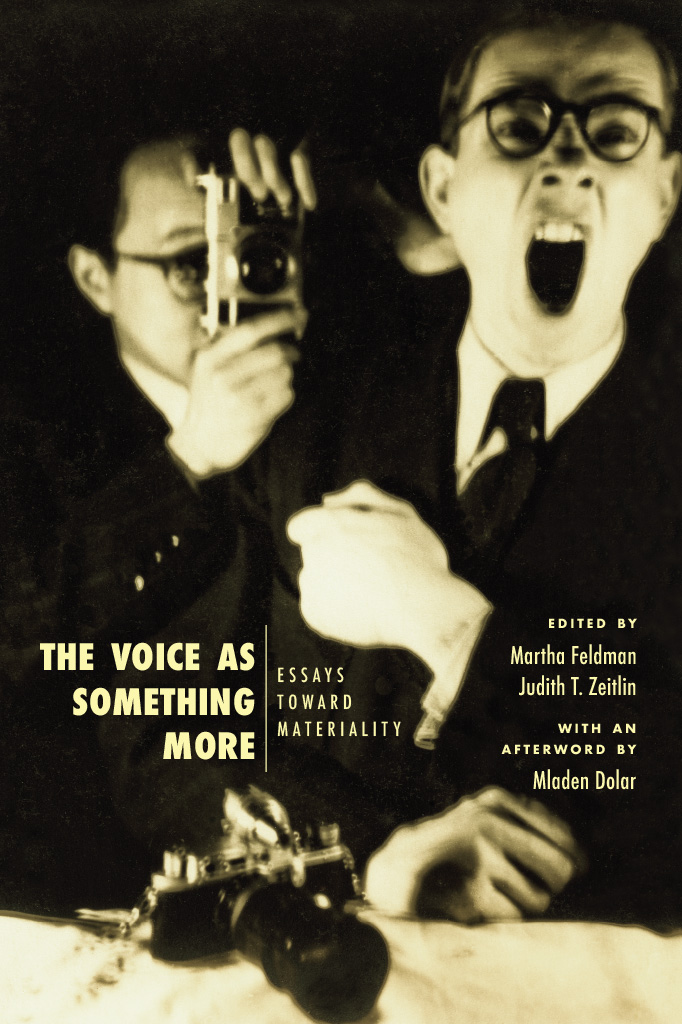
The Voice as Something More
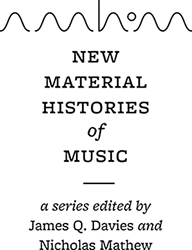
ALSO PUBLISHED IN THIS SERIES
Musical Vitalities: Ventures in a Biotic Aesthetic of Music
Holly Watkins
Sex, Death, and Minuets: Anna Magdalena Bach and Her Musical Notebooks
David Yearsley
The Voice as Something More
Essays toward Materiality
EDITED BY MARTHA FELDMAN AND JUDITH T. ZEITLIN
With an Afterword by Mladen Dolar
The University of Chicago Press
Chicago and London
The University of Chicago Press, Chicago 60637
The University of Chicago Press, Ltd., London
2019 by The University of Chicago
All rights reserved. No part of this book may be used or reproduced in any manner whatsoever without written permission, except in the case of brief quotations in critical articles and reviews. For more information, contact the University of Chicago Press, 1427 E. 60th St., Chicago, IL 60637.
Published 2019
Printed in the United States of America
28 27 26 25 24 23 22 21 20 19 1 2 3 4 5
ISBN -13: 978-0-226-65639-7 (cloth)
ISBN -13: 978-0-226-64717-3 (paper)
ISBN -13: 978-0-226-65642-7 (e-book)
DOI : https://doi.org/10.7208/chicago/9780226656427.001.0001
Library of Congress Cataloging-in-Publication Data
Names: International Conference A Voice as Something More (2015 : Chicago, Ill.) | Feldman, Martha, editor. | Zeitlin, Judith T., 1958 editor. | Dolar, Mladen, writer of afterword.
Title: The voice as something more : essays toward materiality / edited by Martha Feldman and Judith T. Zeitlin ; with an afterword by Mladen Dolar.
Other titles: New material histories of music.
Description: Chicago : The University of Chicago Press, 2019. | Series: New material histories of music | Essays based on papers of the international conference A Voice as Something More, held at the University of Chicago in November 2015. | Includes bibliographical references and index.
Identifiers: LCCN 2019005340 | ISBN 9780226656397 (cloth : alk. paper) | ISBN 9780226647173 (pbk. : alk. paper) | ISBN 9780226656427 (ebook)
Subjects: LCSH : Singing. | Voice (Philosophy) | Voice. | MusicPhilosophy and aesthetics.
Classification: LCC ML 3877 . I 68 2015 | DDC 783dc23
LC record available at https://lccn.loc.gov/2019005340
 This paper meets the requirements of ANSI / NISO Z 39.48-1992 (Permanence of Paper).
This paper meets the requirements of ANSI / NISO Z 39.48-1992 (Permanence of Paper).
For PB and WH
Contents
Martha Feldman and Judith T. Zeitlin
Steven Rings
Judith T. Zeitlin
Marcelle Pierson
Neil Verma
Robert Polito
Laurie Stras
James Q. Davies
Shane Butler
Martha Feldman
David J. Levin
Seth Brodsky
Michel Chion, translated by Zakir Paul
Sarah Nooter
Andrew F. Jones
Jonathan Zwicker
Tom Gunning
Mladen Dolar
Here, two figures wear dark suits, white shirts, and roundish, dark-rimmed spectacles, but the man on the left holds up a camera half blocking his face. Its aimed at a man foregrounded on the right, whose mouth is stretched wide open in a wordless shout, scream, or song. Wordless to us, because as viewers we cannot hear the voice in the image, only imagine it. The photograph calls to us to fill in the empty O of his mouth, the conjured presence of this exaggerated voice, all the more powerful because it is elusive and ungraspable.
The disorienting composition, augmented by a second camera lying slightly out of focus on the table, also demands that we come up with a scenario that explains the unusual setup and the identity of the figures. The man holding the camera must be Jin Shisheng himself, but then he had to have taken the photograph in a mirror. Jins oeuvre shows that he was fond of including multiple self-images and cameras in a single photograph, and at first glance the two figures do look deceptively similar. Upon closer scrutiny, however, the second man is clearly someone else. Who was he, and what were the two of them doing in Darmstadt then?
According to the photographers son, the man with his mouth open was a German friend of his fathers, who was mocking Hitler giving a speech.furnished a model, but for the sound of the speech, the disembodied voice of der Fhrer inundating the radio wavesthe ghost in the machinewas terrifyingly inescapable in Darmstadt in 19391940.
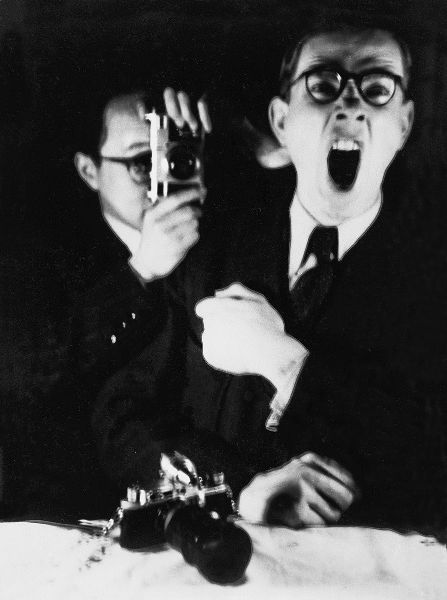
FIGURE 0.1. Jin Shisheng, Self-Portrait in Darmstadt, 19391940. Courtesy of Jin Hua.
This photograph is a fitting entry point into The Voice as Something More because it resonates with many of the approaches to voice explored in this book. The photo compels us to reflect on the role of technology in mediating the voice and in framing it as an object available for study. Yet it also exposes the limitations of both technology and the objectification of voice. It suggests the extent to which all voices can be assumed, borrowed, or ventriloquized, and points to the paradoxical status of voice as something that hovers between embodiment and disembodiment, and thus raises the The story behind the photo and its caption reinforces the need to situate specific voices within a specific historical time and place, yet the overall puzzle of capturing voice that this visual image so cunningly stages cant be solved solely by recourse to history, biography, politics, or technology. Theres always something more to the voicea remainder, a gap, a reverb, an echo. To get at these more phantasmatic dimensions requires additional modes of inquiry, including the psychoanalytic, the literary, the mythic, and the philosophical.
This photograph also appeared on the poster and program for a three-day international conference entitled A Voice as Something More, held at the University of Chicago in November 2015. Organized by the present editors, the conference served as a staging ground for the rethinking of voice studies that engendered this volume. Berthold Hoeckners paper was committed elsewhere and regrettably does not appear here, but we thank him and panel chairs Jim Chandler, Jacob Smith, and Paola Iovene for contributing so much to the intellectual success and liveliness of the proceedings.
The conference in turn grew out of the Voice Project, a faculty research seminar initiated by an interdisciplinary group of faculty and sponsored by the University of Chicagos Neubauer Collegium for Culture and Society between 2013 and 2016. In addition to the three principal investigators of the Voice ProjectMartha Feldman (20132016), David Levin (20132014), and Judith Zeitlin (20142016)the core participants included Seth Brodsky, Daniel Callahan, Tom Gunning, Sarah Nooter, Jessica Peritz, Marcelle Pierson, Steven Rings, and Neil Verma. For two years, we met several times per term, each of us taking turns curating one of these meetings. Jim Chandler, Nicholas Harkness, and Jacob Smith also presented to the group, while Nina Sun Eidsheim and James Q. Davies gave presentations at a one-day Voice Project symposium held in spring 2014. Naturally, contributors to the present volume represent a broader range of institutions and fields.
Our book is greatly enriched by contributions from the French film scholar and composer Michel Chion and the Slovenian philosopher Mladen Dolar. Both reprise their respective roles at the 2015 conference, Chion as keynote speaker and Dolar as conference respondent. Zakir Pauls English translation, initially commissioned for use at the conference, preserves the spoken quality of Chions lecture, with all its digressions and wit.
Next page
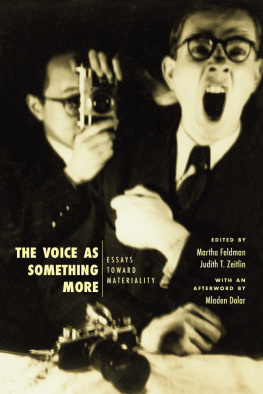



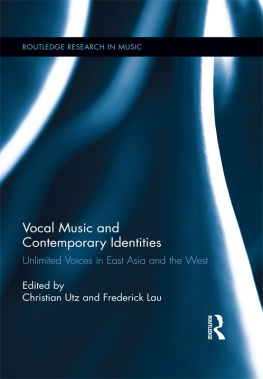
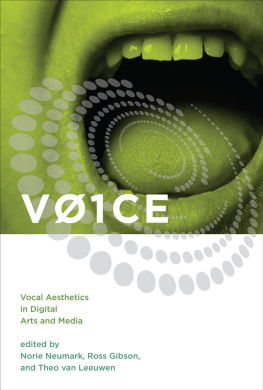
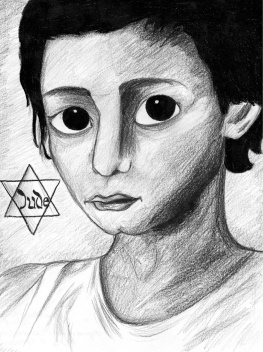
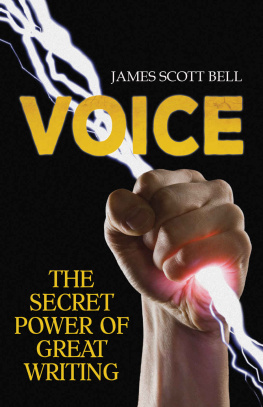
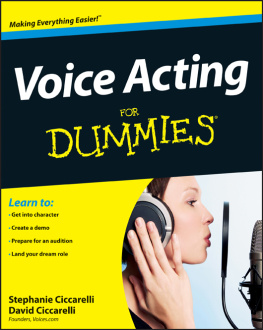


 This paper meets the requirements of ANSI / NISO Z 39.48-1992 (Permanence of Paper).
This paper meets the requirements of ANSI / NISO Z 39.48-1992 (Permanence of Paper).